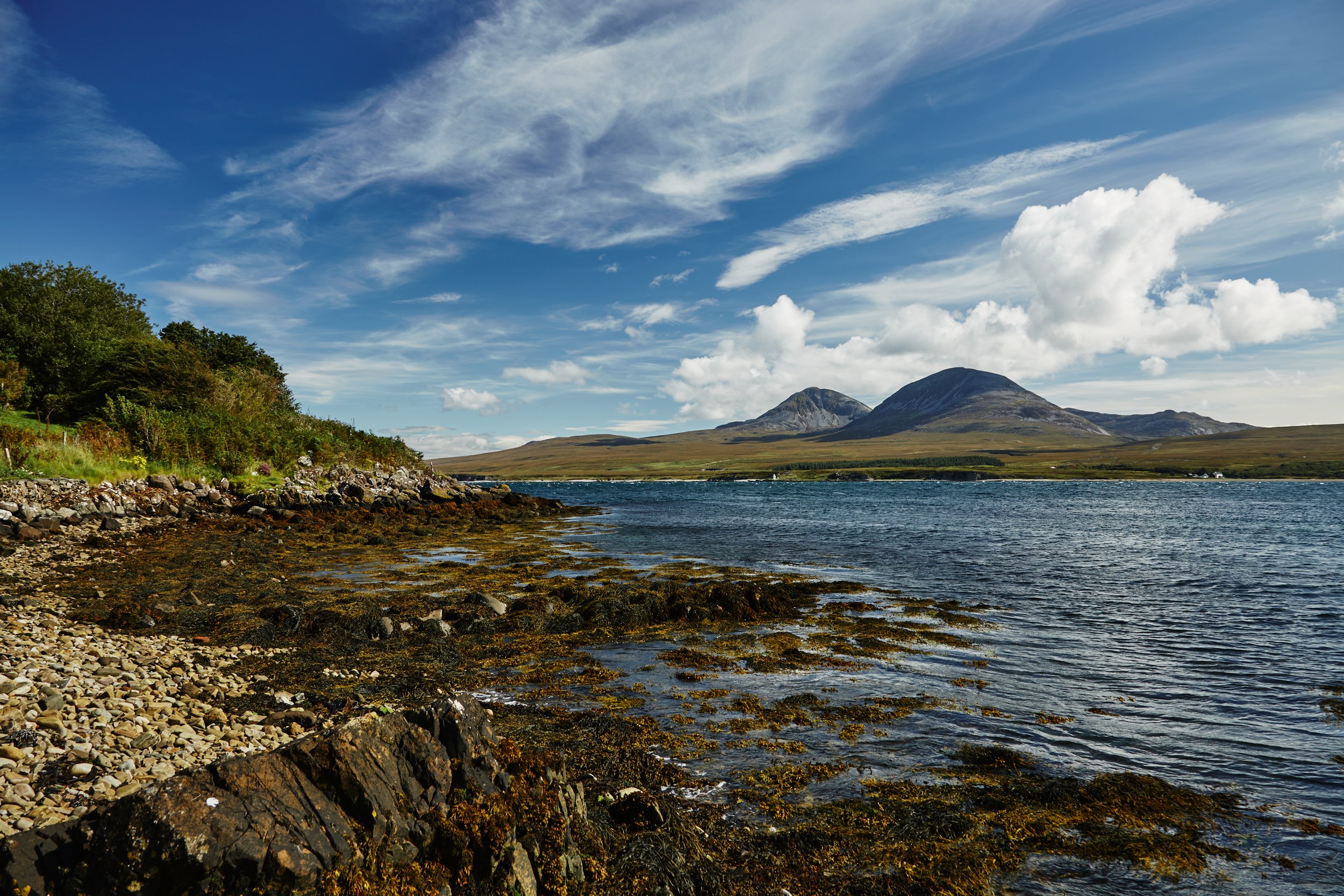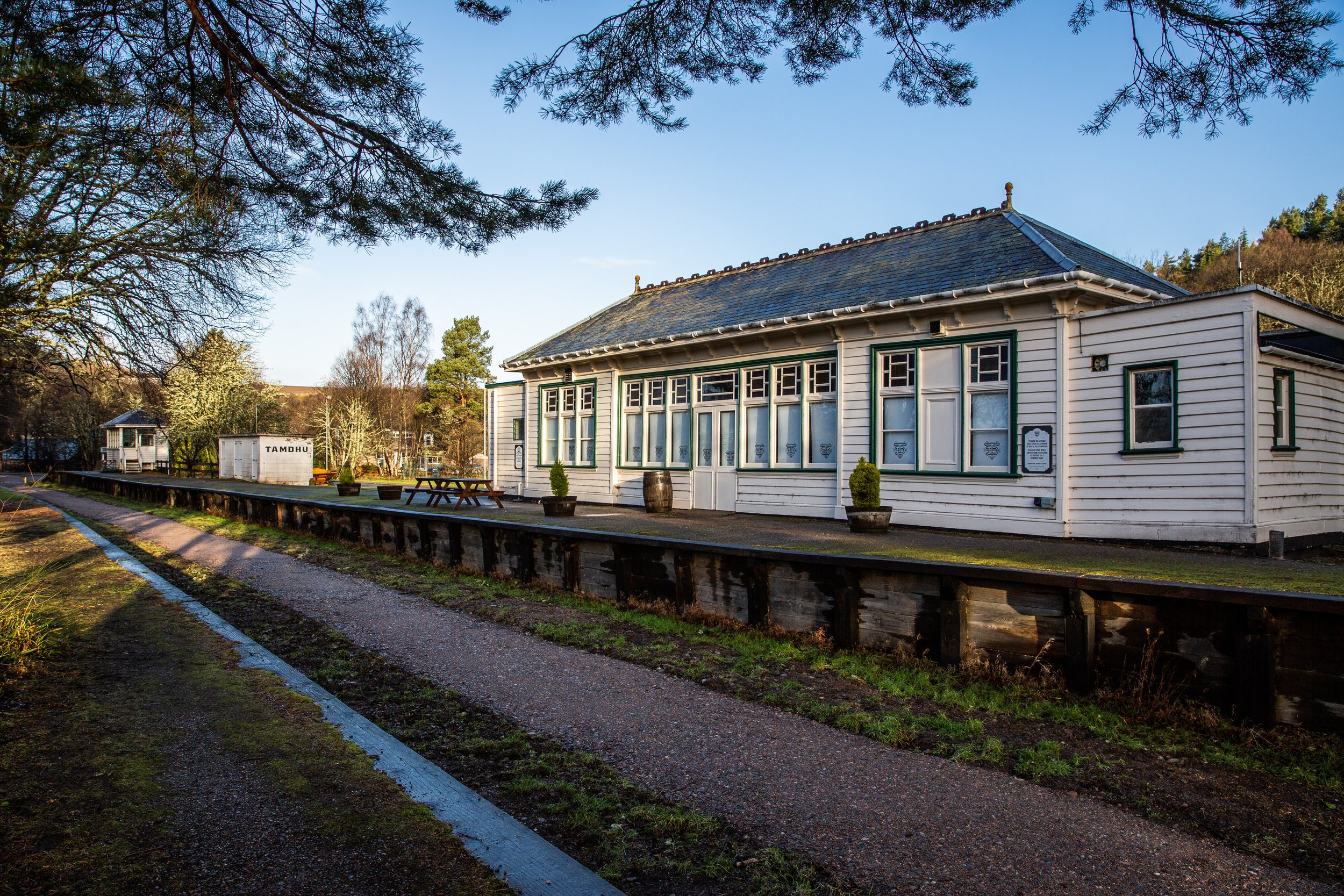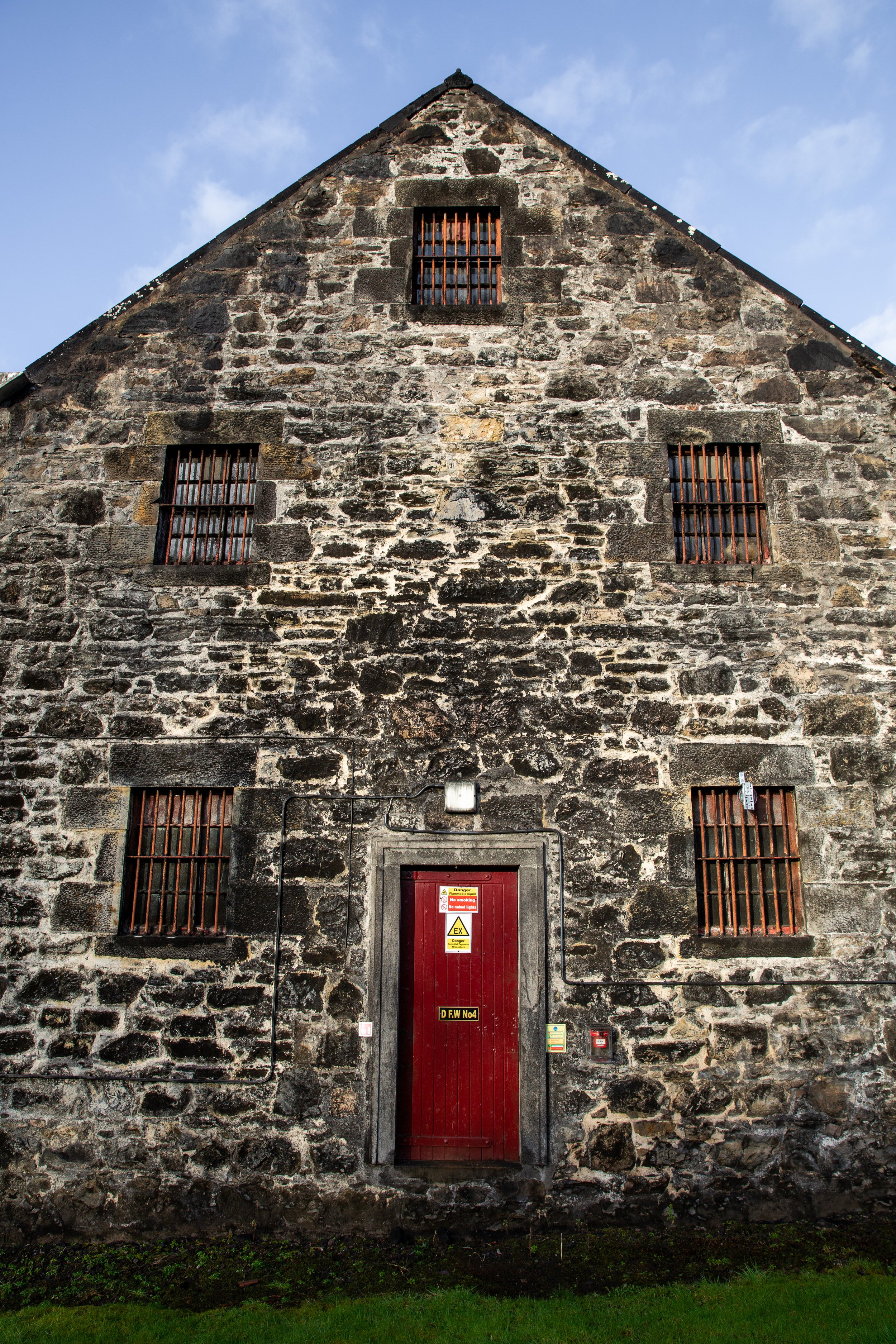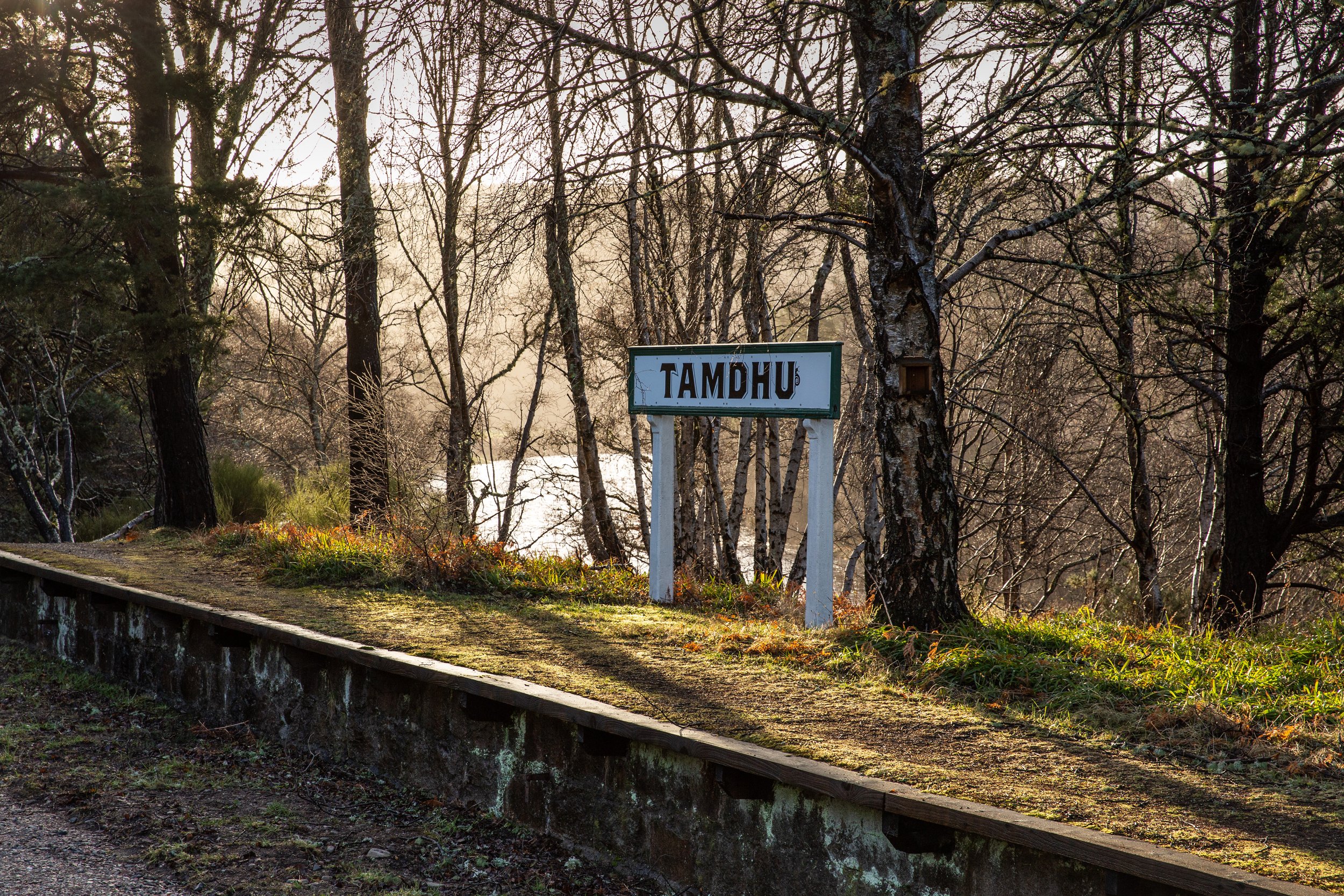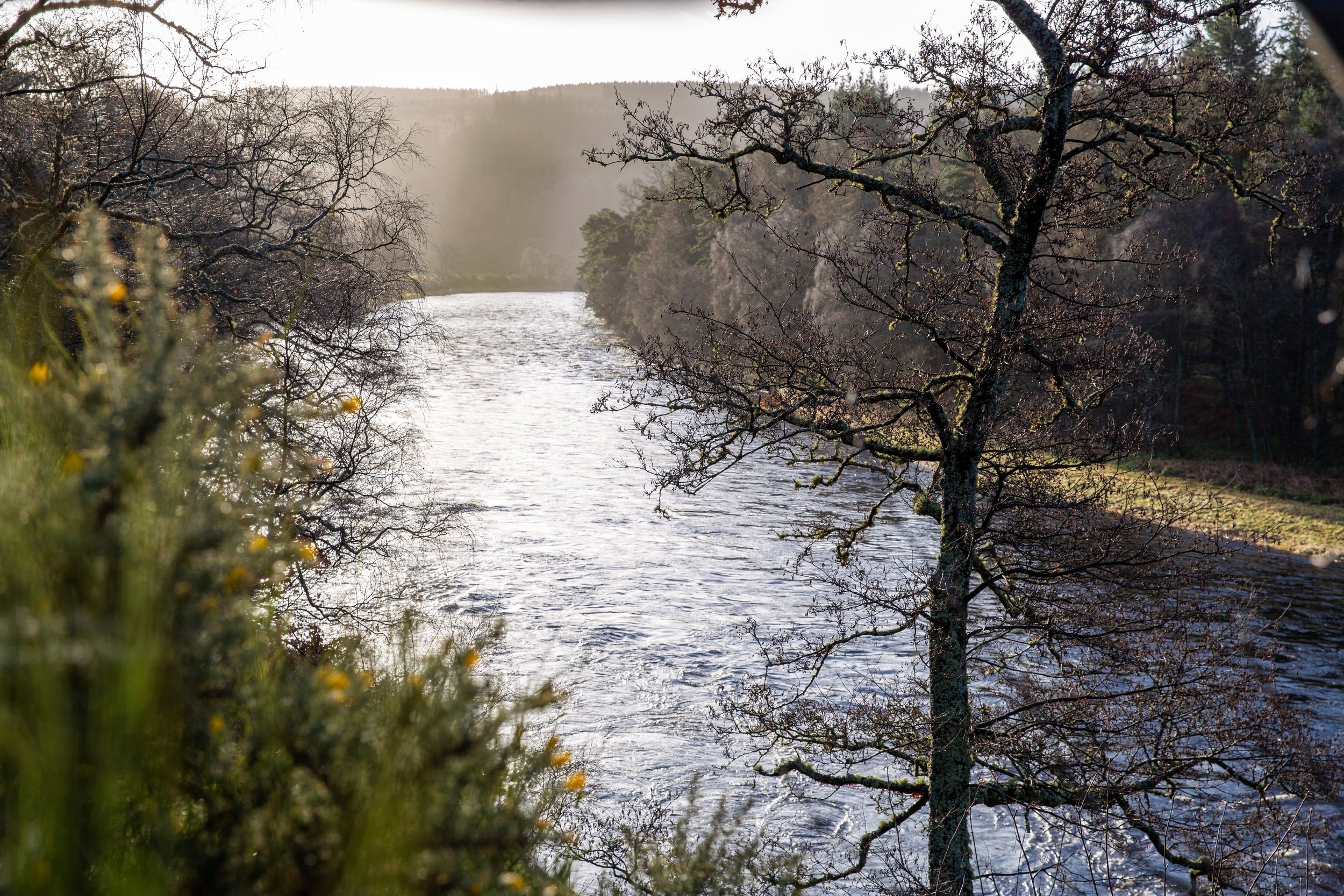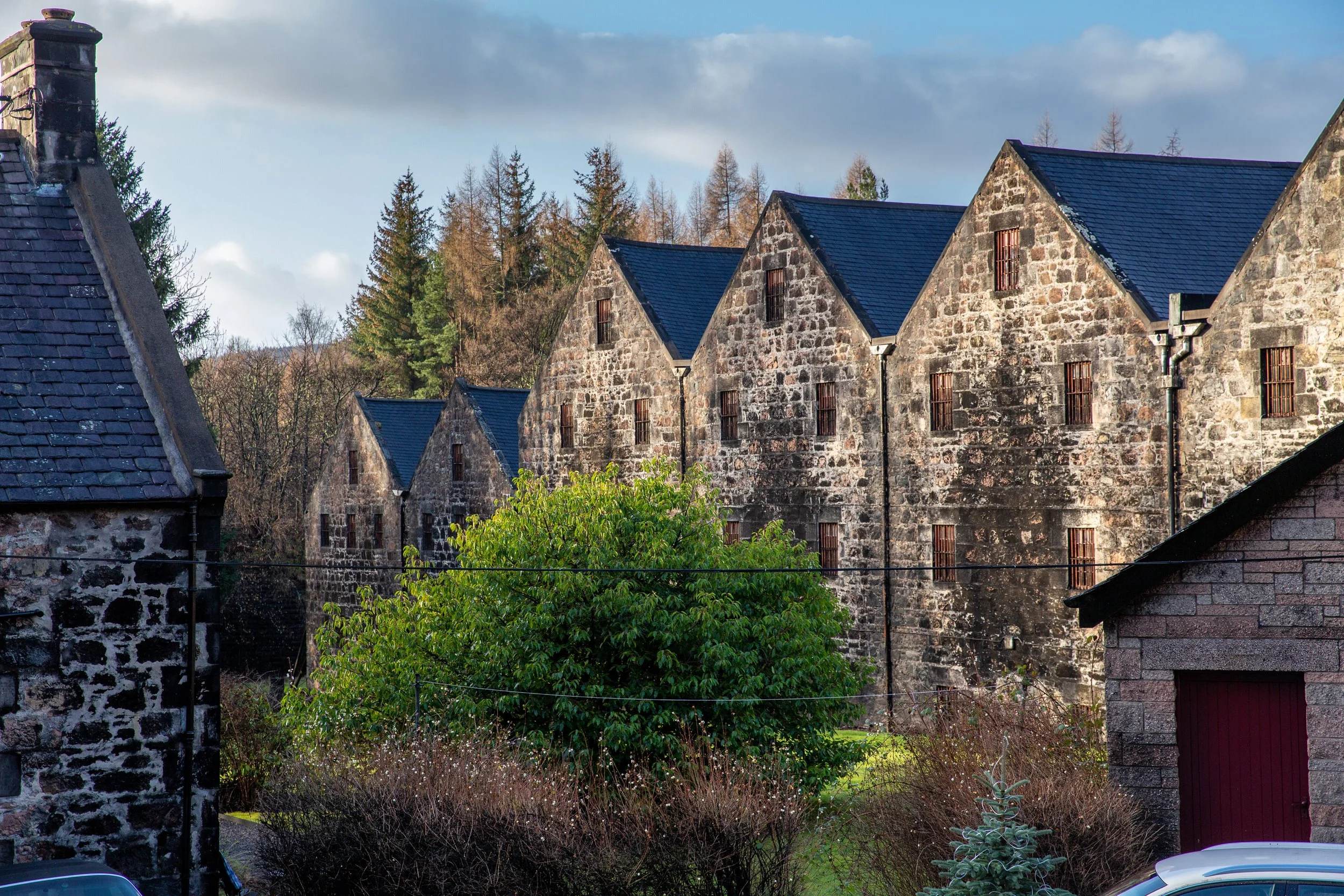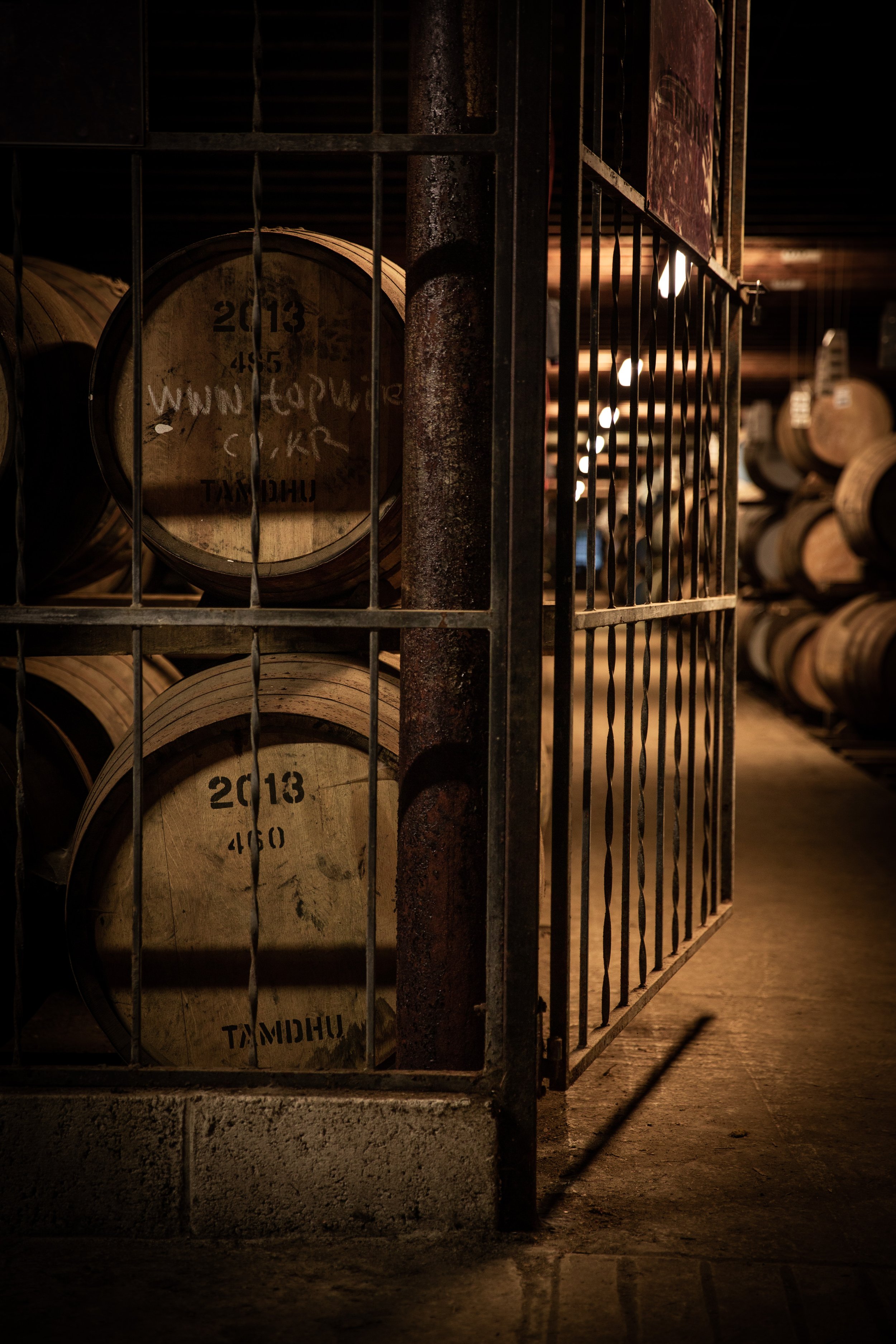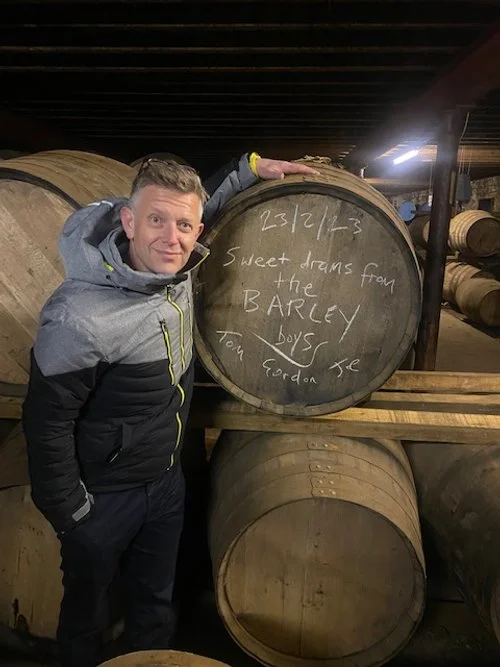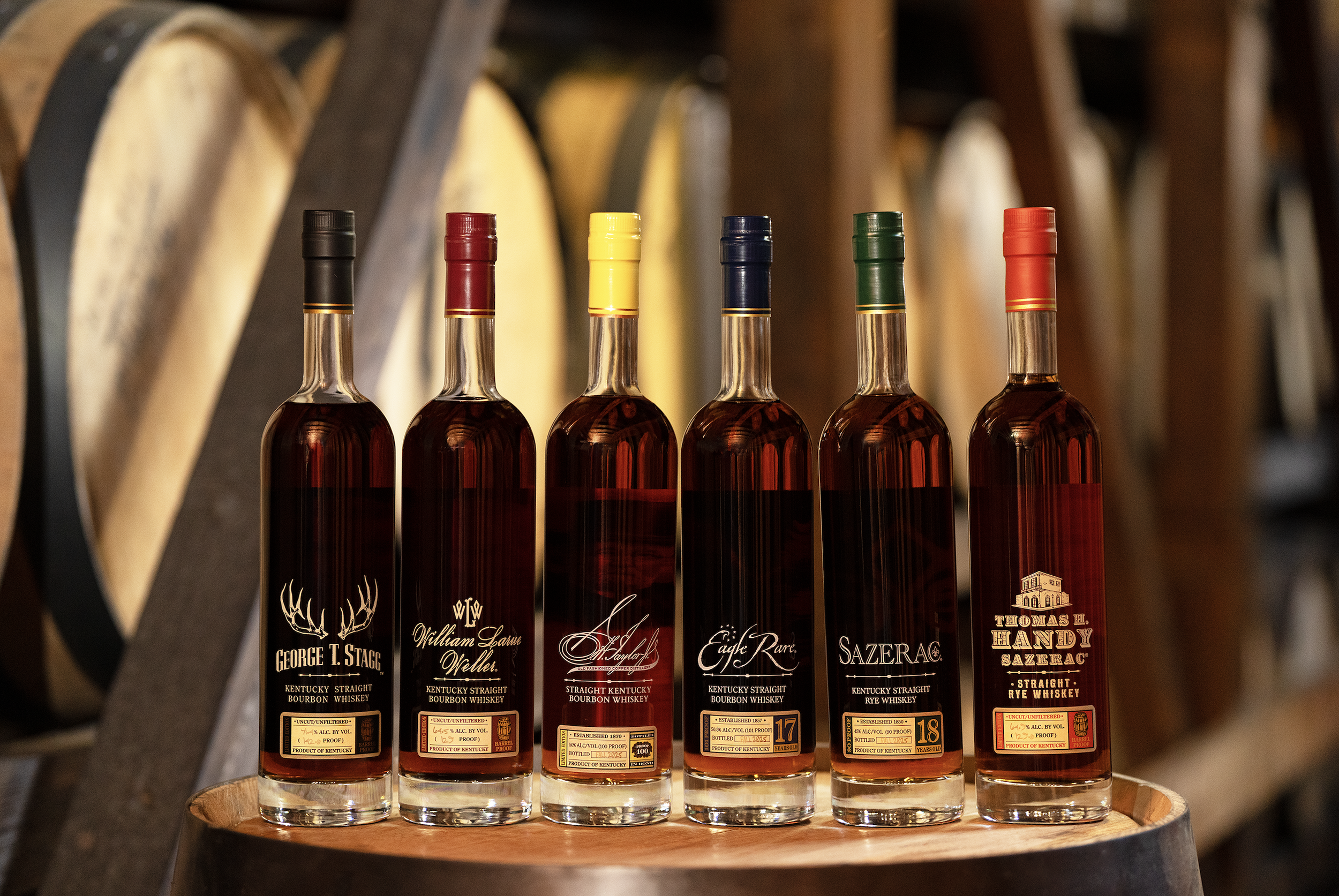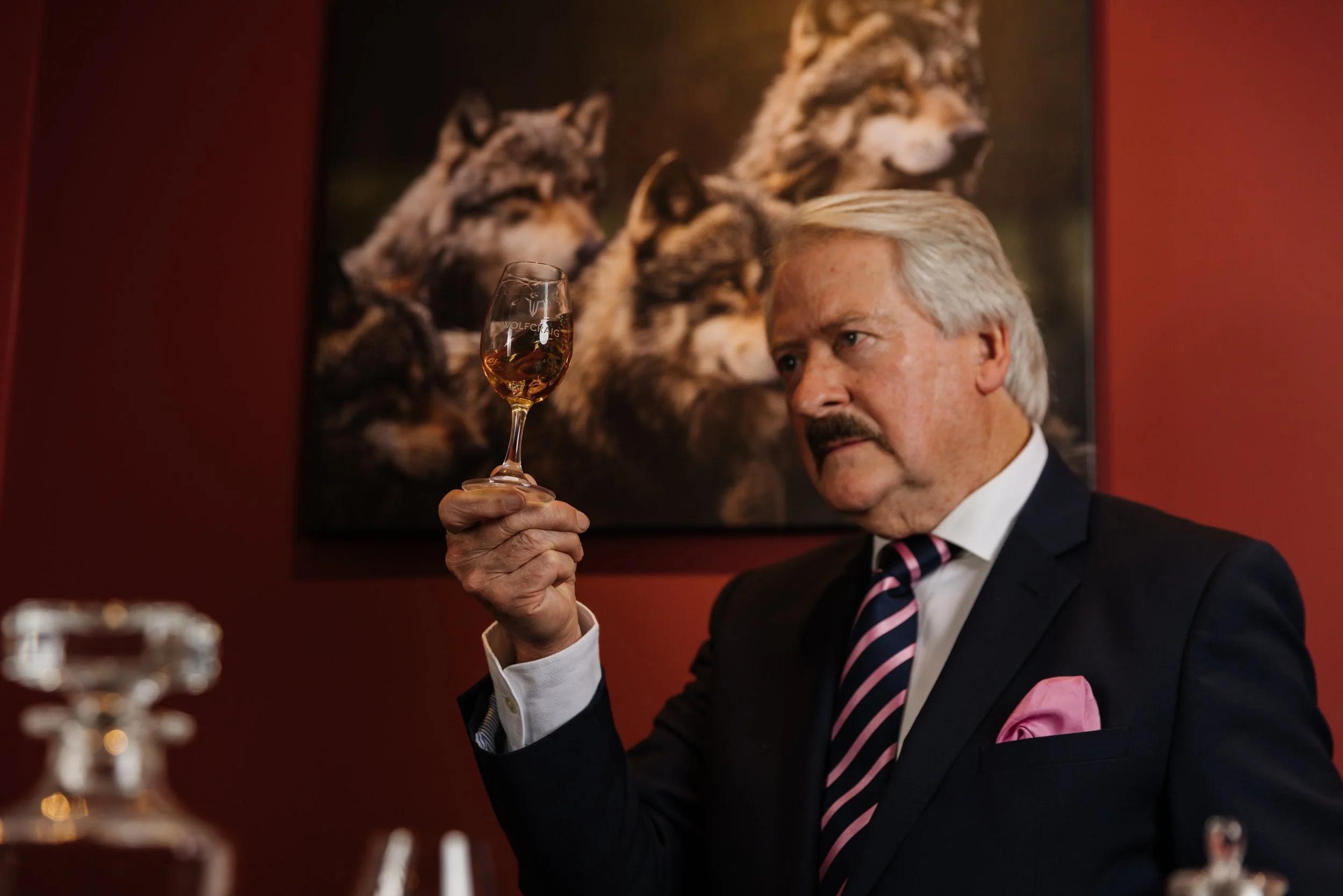Speyside Confidential
Tamdhu distillery
Nestled in a dark valley south of Elgin is one of the strangest and most beguiling whisky sites in the world. Gordon Thomson gets a rare glimpse inside Tamdhu
Tamdhu is special. There is no gift shop, no Tamdhu Experience, no merch or marketing guff here. No buttery-cheeked staff to greet you in the visitor centre (that’s right, there isn’t one). There is nothing flash about this place. The dunnage warehouse walls are black and foreboding, set down in a gloomy valley-cum-carpark (the Gaels weren’t wrong when they named this spot Tamdhu - ‘little dark hill’ ). The on-site offices are closer to David Brent’s Slough than Speyside, but none of this matters, none of it, because Tamdhu really is special. And you’ll have to take my word for it, because you can’t go there.
This isn’t bravado, it’s simply the truth. This magical and improbable place, where alchemy and Oloroso sherry casks combine to produce one of the most exquisite of all Speyside whiskies, has been shuttered to the general public since 2012 when current owners Ian MacLeod took over. Unless you book a tour during the annual Spirit of Speyside festival (and you’ve just missed that for another year), or are lucky enough to swing an invite like we did, there’s no way in.
And that’s a shame, because this place has a remarkable history, a gorgeous setting, those office carbuncles aside (just look at the picture at the top of this page) and a repertoire of tricks and quirks that only start to unfurl once you step up and out of the main site and discover what lies beyond.
Let’s start with the Grade B-listed Victorian railway station. Yes, Tamdhu distillery had its own train station, built in 1897 on a sweeping, frothing bend of the muscular River Spey. What was once a bustling stop on the mainline from Inverness to London, where legendary distiller John Grant would take high-tea with his father before hopping onto the sleeper to conclude some whisky business in the capital, is now a lovingly restored hospitality space, replete with stain-glass windows, Tamdhu-print wallpaper (very William Morris) and an eye-catching menu prepared for the last guests to dine here, from Spain, featuring Serrano ham and ‘Cullen Skink croquettes’.
‘Distiller John Grant would take high-tea with his father before hopping onto the sleeper train at Tamdhu to conclude some whisky business in the capital’
Our host is the affable and intensely knowledgeable distillery manager Sandy McIntrye. He reckons the food is sensational, and he’s also a fan of the ‘time warp’ cosiness of the old waiting room too. ‘Moving sherry casks and barley, as well as passengers, was the station’s main purpose in Victorian times, but now we use it to entertain guests, we often feed them, maybe serve up some comedy, and then we whisk them up the river to Aberlour in Canadian canoes.’
You don’t get that at Macallan.
The restored waiting room and, left, signal box; the old railway line is now part of the Speyside Way
The last train pulled out of Tamdhu, or Knockando as it was called by then, in 1965, a victim of Beeching’s paralysing blitz on local rail routes across the country. But the waiting room remains, as does the old signal box, fetchingly restored as a 5-berth snug, albeit one where you have to negotiate the colourfully painted signal-man’s levers before taking your seat facing out across the track where trains once shuttled into the heathery interior.
The track now forms the spine of the Speyside Way, a beautiful 66-mile trail beloved of walkers and cyclists, that hugs the Spey from Aviemore in the south to Buckie on the Moray coast, and where Sandy can occasionally be found after a hard day distilling propping up the wooden wash back that he rather niftily had repurposed as a riverside seating area.
‘The ingenious fish ladder allows migratory salmon to travel up a dam in the river to reach spawning grounds on a weir inaccessible for over a hundred years’
‘I sat there one night when it was snowing with a Chinese takeaway and a bottle of wine’, he tells me, laughing, and still short-sleeved, despite it being a freezing February afternoon. In the summer, Sandy swims in the Spey near here. He’s got a secret spot that he shows us, but only if we promise not to share it with you. Alternative and equally beguiling wild swimming locations abound, though those considering taking the plunge (the public have access to the river all along this glorious stretch) should beware of the rapids. They are no joke.
‘There’s a quirkiness you get with Tamdhu that I’ve never found anywhere else’, Sandy is saying as we walk back up the hill from the river. As if to prove his point he leads the Barley team to the location of the distillery’s distinctive salmon ladder on a tributary of the Spey. Constructed in 2018 under Sandy’s watchful eye as part of Tamdhu’s ongoing commitment to local sustainability, this ingenious structure allows migratory salmon to travel up a dam in the river to reach spawning grounds on a weir inaccessible for over a hundred years.
‘Technically, it’s an Alaskan fish pass’, Sandy shouts, as we stand on a latticed metal bridge above the noisily churning weir, explaining that the canny salmon ‘present themselves’ in an area of ‘great turbulence’ at the base of the pass. In reality, it’s a long thick plastic tunnel open to the skies that looks a bit like one of those industrial tubes builders use to transport rubble down from roofs. ‘The pass is full of water, with ‘veins’ to enhance the turbulence inside, which propels the salmon up and out into the tranquil waters of the weir.’
‘Warehouse No 1 is an Aladdin’s Cave of ancient casks full of Tamdhu’s trademark fruity spicy spirit, the mouldering room bathed in dusty amber light’
Alas, we don’t see any salmon shooting out the end of the tunnel today, nor does Sandy manage to locate the local otters often to be found lolling around in the rusty stillness of the newly repopulated breeding ground. But it’s an admirable initiative and another thing that has put Tamdhu firmly on the map as a progressive and environmentally engaged whisky-maker.
‘Sandy lets us scrawl on the end of an unsuspecting barrel like naughty schoolchildren’
Gordon and the Barley barrel
Sandy shows us round the distillery’s cooperage and, before we leave, treats us to a thrilling nose around Warehouse No 1, an Aladdin’s Cave of ancient casks full of Tamdhu’s trademark fruity spicy spirit, the mouldering room bathed in dusty amber light. He even lets us scrawl like naughty school children on the end of an unsuspecting barrel.
‘I never fail to feel a sense of awe when I come in here’, he says, handing out the drams, and sticking the bung back into the guts of the barrel he’s just plundered. ‘I’m simply the guardian of this place for now, a lucky man to be given the keys.’
He’s being modest. Sandy has led a massive transformation at Tamdhu. Investment in the site is deep. The brand is going places. And so, I fear, are we. Out of this quietly special valley and back to a lesser reality.


